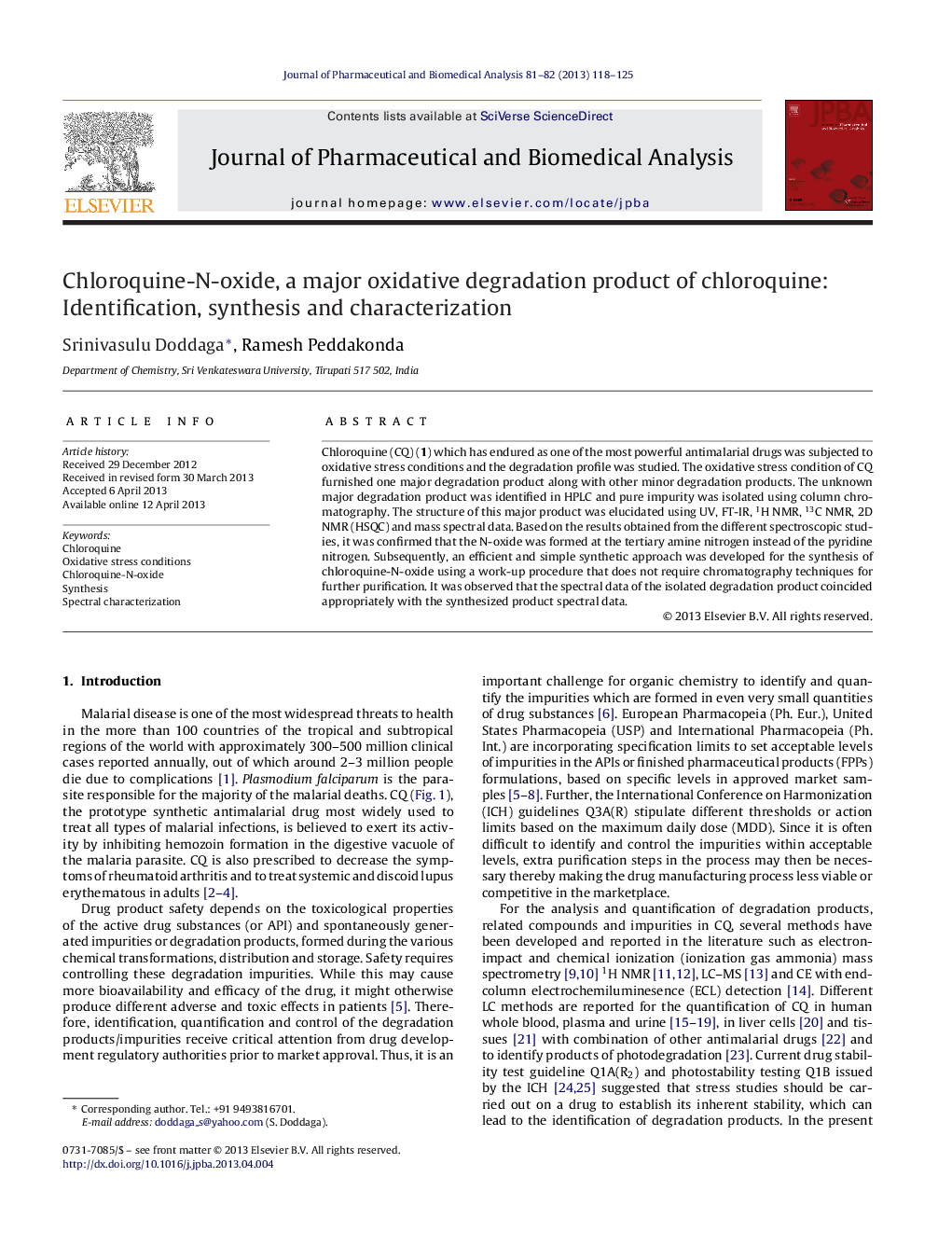| Article ID | Journal | Published Year | Pages | File Type |
|---|---|---|---|---|
| 1221224 | Journal of Pharmaceutical and Biomedical Analysis | 2013 | 8 Pages |
•Stability studies were done on chloroquine by oxidative stress conditions.•The major degradation product was identified and isolated as chloroquine-N-oxide.•MS was utilized to identify the impurity and fragmentation pattern was depicted.•Facile approach was developed to synthesis chloroquine-N-oxide using m-CPBA.•Plausible reason was given to form N-oxide at tertiary nitrogen of choloroquine.
Chloroquine (CQ) (1) which has endured as one of the most powerful antimalarial drugs was subjected to oxidative stress conditions and the degradation profile was studied. The oxidative stress condition of CQ furnished one major degradation product along with other minor degradation products. The unknown major degradation product was identified in HPLC and pure impurity was isolated using column chromatography. The structure of this major product was elucidated using UV, FT-IR, 1H NMR, 13C NMR, 2D NMR (HSQC) and mass spectral data. Based on the results obtained from the different spectroscopic studies, it was confirmed that the N-oxide was formed at the tertiary amine nitrogen instead of the pyridine nitrogen. Subsequently, an efficient and simple synthetic approach was developed for the synthesis of chloroquine-N-oxide using a work-up procedure that does not require chromatography techniques for further purification. It was observed that the spectral data of the isolated degradation product coincided appropriately with the synthesized product spectral data.
Graphical abstractFigure optionsDownload full-size imageDownload as PowerPoint slide
